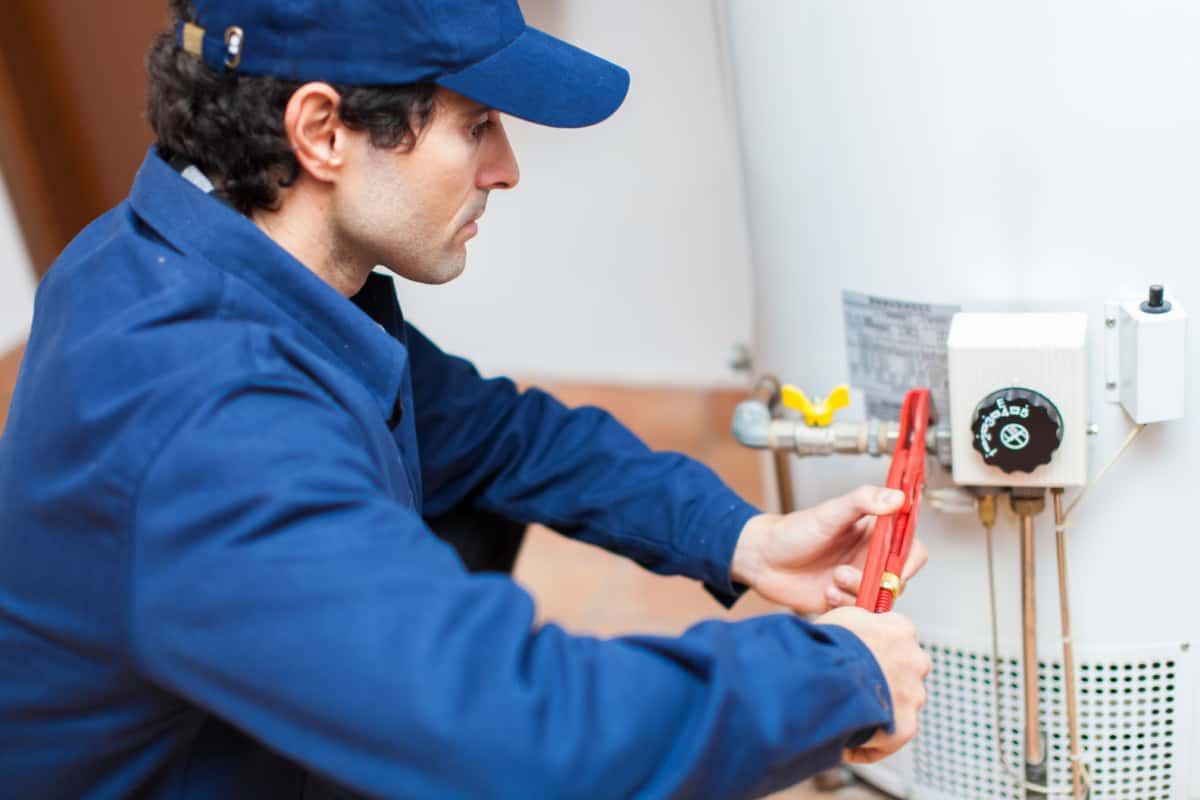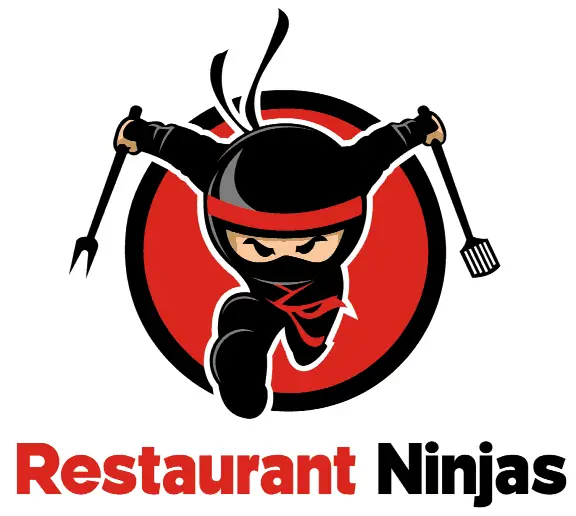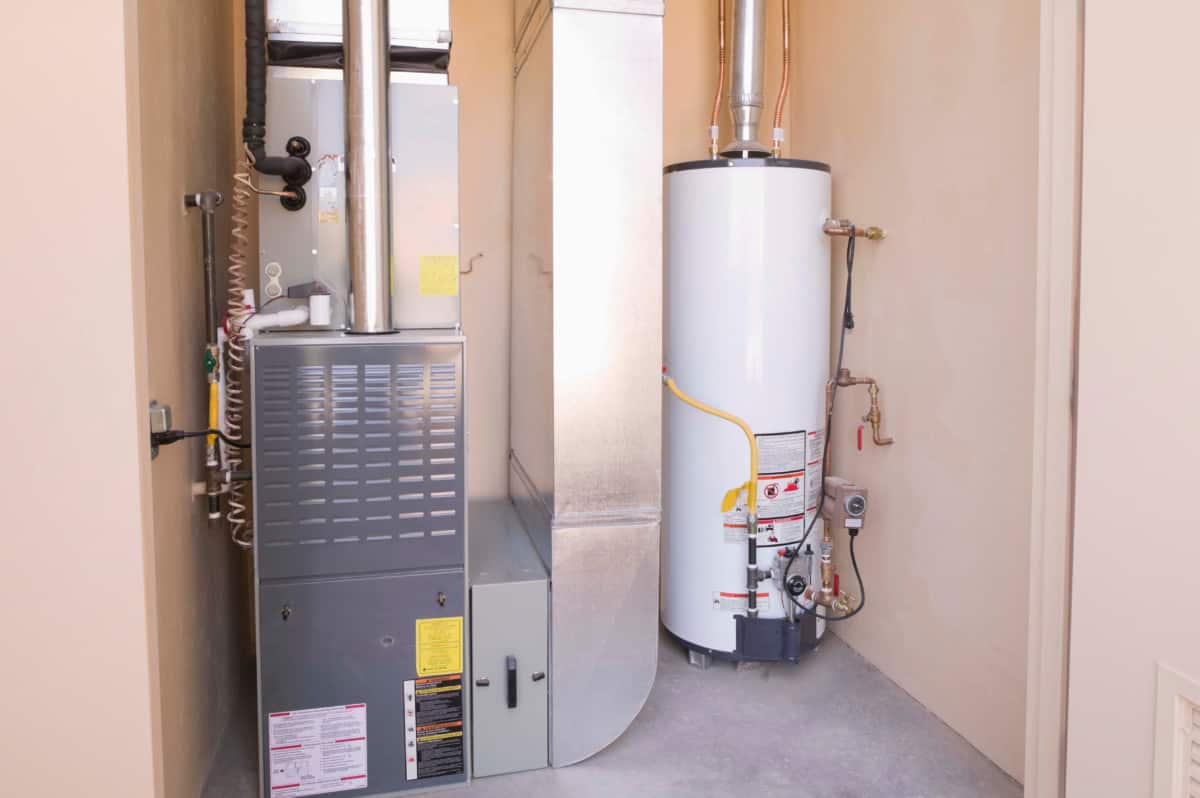Having hot water is an often overlooked but vital part of running a restaurant. Unfortunately, there will inevitably come a day that your water heater goes down and you are left without hot not water while waiting for repairs.
Can your restaurant be open without hot running water? Yes, most states allow restaurants to legally operate temporarily without hot running water. However, hot water is still necessary to remain open. The restaurant must utilize an alternative method for heating and storing hot water for cleaning and sanitation.
In order to be prepared for a hot water heater breakdown, you should have a written standard operating procedure (SOP) in place. This SOP should include a timeline for managing a water heat outage as well as a list of specific steps and materials. You open yourself up to health department fines and potential closure if your hot water heater goes down and you decide to stay open without enacting emergency provisions.
Hot Water Outage Standard Operating Procedure
Having a written SOP for a water heater outage as part of your operations manual is a fantastic way to be prepared for this type of emergency. It should be broken into two parts with the first part being a list of supplies and the second part being a list of actions to take.
While it is not an absolute necessity, you will definitely be thanking yourself later if you take the time now to make a water heater “crash kit”. The crash kit contains all the supplies you need in case of a water heater breakdown. You can even laminate your SOP and tape it to the lid! To make this crash kit, buy a 25-gallon Rubbermaid container and fill it with the following:
- Hand Sanitizing: Have at least one bottle for each hand washing and restroom sink in your restaurant.
- Paper Supplies: Washing dishes without hot water is not fun. It is much easier to just go to using paper supplies during the outage.
- Tea Urns: You will need one for each restroom and each hand washing sink.
- Water Boiling Equipment: Whether you use stockpots, the coffee machine, or a combination of the two, you’re going to need to be able to heat a large quantity of water quickly. If you are using a standard coffee machine that only makes a few cups at a time, be sure to have a few extra stockpots available!
- (Optional) Hot Beverage Dispenser: A 5-gallon cambro dispenser would be ideal, but this is not required.
- (Optional) Customer Notice: Be transparent with your customers and let them know what is going on.
You still need hot water in order to operate, so the first order of business is to begin manually heating water. Start by filling up stock pots of water and getting them on the oven. You need to get the water to at least 120 degrees. If you have a large coffee machine, you will be able to produce a few gallons every 5 minutes.
As you get water to the proper temperature, fill your tea urns and hot beverage dispenser. You will need a tea urn for each hand washing and restroom sink and another for the dish sink. The hot beverage dispenser will act as an emergency water tank that will be the central hub that you utilize to fill all your tea urns. Be sure to keep it full!
Hand washing is the most crucial thing effected by a hot water outage. In order to remain open, this is the first thing that needs to be addressed. Set up a tea earn by each hand washing sink. This includes both your back of the house and restroom sinks. Include a copy of your customer notice at the restroom stations as well as a bottle of hand sanitizer for peace of mind.
Washing Dishes is the next hurdle to jump. To simplify the process, substitute paper supplies wherever possible. This means using paper plates, plastic flatware, and plastic cups. Doing this will cut down on a large amount of what needs to be washed. While it does not replace washing, you can utilize bag liners for your hot and cold pans to ease the washing process.
Your dish machine is not going to be effective in either cleaning or sanitizing without hot water unless it has a separate water heater. Even if you have a low temp machine, the rinse cycle still needs to reach at least 120 degrees. That means you are going to need to set up a three-compartment sink. The wash and rinse water need to be at least 120 degrees. The sanitizer water temperature depends on the type of sanitizer you are using so check the packaging for instructions. The dish sinks are where the majority of the water you heat will end up.
Its a best practice to have a notice on the door to let customers know that your restaurant is going to be operating differently. This way they know what to expect and set their expectations accordingly. The notice also makes them aware that you are complying with health code and will help ease any concerns they might have upon learning that you’re operating without running hot water. Otherwise, they might think you are violating health code and question the cleanliness and sanitation of the rest of your operation. Place a customer notice in the bathrooms and on all entry doors.
Who do You Call When the Water Heater Breaks?
Your first call should be to a plumber. Hopefully, you have a regular and reliable plumber that you can reach out to for immediate service. Whether it is a gas or electric water heater, they will be able to make the repairs in a short amount of time. You might think this is common sense, but make sure they know you need the repairs made in the most urgent way possible and that you do not plan to close.

While it is not required, it is a really good idea to proactively contact your local regulatory agency, such as the Department of Agriculture as soon as the water heater goes down and you have repairs lined up. There is a very good chance that a patron is going to call them anyway, so its best to get out in front of it. Let them know that your hot water heater broke down as well as the ETA of the repair crew. Lastly, let them know your plan to remain open using stored hot water and confirm that it is within the health code.
What to do AFTER Hot Water is Restored
After your hot water heater has been repaired and you have water up to the appropriate temperature, take a few steps to ensure the transition back to normal operations. These steps include the following:
- Flush all sinks with hot water for at least 5 minutes
- Remove the tea urns and hand sanitizer from the bathrooms
- Drain your tea urns and hot beverage dispenser. Clean and sanitize the units and allow them to air dry before storage
- Remove your customer notices from the entry doors and bathrooms
- Restock your “crash kit” with enough supplies for the next emergency
- Call the Department of Agriculture back and let them know you are once again fully operational
Related Questions
What Temperature should restaurant sink water be? The FDA requires that restaurant sink water, including handwashing sinks, reach a minimum temperature of 110 degrees. Interestingly, a recent study by Rutgers University concluded that water temperature did not result in cleaner hands.
How much water does a restaurant use? The average use of water in restaurants is between 3000 and 7000 gallons per day. Another often-quoted study states an average of 24 gallons per seat per day. A recent study conducted by Kansas State University concluded that Kansas restaurants used an average of 2.8 million gallons per year, which comes in higher than the average range at about 7,671 gallons per day.
What is the Maximum temperature for hot water? Despite what is often reported, there is no code that states a maximum allowable temperature. With that being said, if you set the temperature over 125 degrees you run the risk of scalding people with more sensitive skin.

